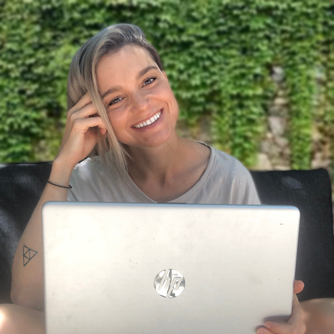Each spring in countries all over the world, residents set their clocks forward by one hour, only to set them back again in the fall. This tradition is called “Daylight Savings Time,” and in recent years, it has garnered a lot of attention.
Some people love having the extra hour of daylight in the summer; some people miss getting the extra sleep. Studies show, though, that this switching of the clocks may have a bigger impact on our health, mood, and sleep than we previously thought – a big reason that some are now pushing for legislation to change this tradition
In this article, we’ll go over a brief history of Daylight Savings Time, what it is, how it impacts our health and sleep, and some detailed tips for how to better prepare for and adjust to this change in time.
What is Daylight Savings Time?
Daylight Savings Time1 is the time of year when we advance our clocks by one hour in order to extend daylight hours during spring and summer months. For most of the countries that observe Daylight Savings Time in the Northern Hemisphere, it begins in the spring and ends in the fall. Specifically in the United States, Daylight Savings Time starts the second Sunday in March and ends the first Sunday in November.1
That said, not all states2 in the U.S. observe Daylight Savings Time. For example, Hawaii, most of Arizona, and the territories of Guam, Puerto Rico, American Samoa, the U.S. Virgin Islands, and the Northern Mariana Islands opt out of the switch entirely. Meanwhile, 19 states3 in the U.S. have passed legislation to adopt permanent daylight savings time – always remaining on the “Spring Forward” schedule – and these laws will go into effect if Congress passes the “Sunshine Protection Act,” but at this point, it has not.
As you’ll see, there are many reasons states are pushing for one, consistent time throughout the year, and in fact, 63 percent4 of Americans would rather do away with Daylight Savings Time altogether. Why, then, do we have Daylight Savings Time in the first place?
What is the Purpose of Daylight Savings?
Daylight Savings Time didn’t go into effect until 1916 in Germany.2 The idea was, setting the clocks forward by an hour in the spring would add an hour of sunlight to the end of the workday. It wasn’t so people could get out and enjoy the day; rather, it was about using less coal to power the coal-powered lights.2 In 1918, the United States introduced Daylight Savings Time for the same reason.
Today, more than 70 countries5 around the world observe Daylight Savings Time.
Spring Forward
“Spring Forward” is the common saying used to remember which direction to set your clocks in the spring. On the second Sunday in March in the U.S., you’ll set your clocks one hour forward. For example, if you set your clock at 7:00 p.m. that Sunday, you’d change the time to 8:00 p.m. This way, it would still be just as light as it normally is at 7:00 p.m., but the time would be one hour later.
Fall Back
On the first Sunday in November, Daylight Savings Time ends for most states in the U.S. “Fall back” is the term many use to remember which way to set their clocks. In this case, it’s just the opposite of “springing forward.” What was 7:00 p.m. will then become 6:00 p.m. So it will be as dark at 6:00 p.m. as it previously was at 7:00 p.m.
Does Daylight Savings Time Affect Our Health?
According to Johns Hopkins Medicine6, the answer is a definitive “yes.” After “springing forward” in March, 55 percent of Americans report feeling tired4. However, according to other studies, there are longer-term health consequences.
For example, there is evidence that changing the clocks leads to an increase in heart attack7 and stroke8 rates. Particularly in the spring when we lose an hour of sleep, hospital admissions for arrhythmia9 go up, as does the potential risk of car accidents10.
Additionally, the time change in spring seems to have a negative impact on people’s mental health11, contributing to an increase in depression, anxiety, mood disorders, and substance abuse.
This can all be traced back to one thing: sleep. When it is light outside later in the day, we tend to have more trouble falling asleep because our body’s natural circadian rhythm is thrown off. This is particularly difficult in the weeks just after Daylight Savings Time begins in March when we are not only adjusting to a new time but also adjusting to the later sunset.
Less sleep can lead to a myriad of health issues12, including all of those mentioned above.
How Long Does It Take for Our Bodies to Adjust During Daylight Savings Time?
The good news is humans are incredibly adaptive. Morning people tend to adapt the fastest, taking just a few days13 to adjust to the change in time, whereas the average person tends to adapt within about a week.6 “Night owls,” seem to take the longest to adapt to the time change, taking more than a week.13
Tips To Prepare and Adjust to Daylight Saving Time

If Daylight Savings Time is rough for you, there are some things you can do to make the transition smoother.
- Ease into it the week before – Experts at Cleveland Clinic14 recommend going to bed about 30 minutes earlier starting one week before Daylight Savings Time begins in March. This should help in the transition.
- Update your clocks before you go to bed – Since Daylight Savings Time begins and ends at 2:00 a.m., it might be helpful to manually adjust any clocks that you need to the night before. This way when you wake up, all of your clocks (not just smartphones and computers) will already display the correct time. Check out our list of best alarm clocks here.
- Stick to a consistent schedule – This includes your bedtime and wake schedule, as well as the times you normally eat, exercise, and engage in social activities. Keeping these things consistent, no matter how light or dark it is outside, should help keep your body’s circadian rhythms on track.14
- Try taking melatonin – It can be hard to go to bed at your normal bedtime when it is suddenly light outside later and you’ve lost an hour of the day. For this reason, using a melatonin supplement during the beginning of Daylight Savings Time could help regulate your body’s circadian rhythm.
- Get outside in the morning – Just like melatonin at night can help regulate your circadian rhythm, so can exposing yourself to natural sunlight in the morning.
- Avoid coffee and alcohol – Coffee can negatively impact sleep for up to six hours15 before going to bed, and alcohol16 can cause sleep issues such as insomnia, breathing issues, and a disruption of the circadian rhythm. Since the circadian rhythm is already disrupted by Daylight Savings Time, the best thing to do is avoid both caffeine and alcohol during this transition.
- Avoid blue light before bed – Blue light is emitted from electronic screens, including phones, televisions, computers, and other devices. This sort of light can delay melatonin production17, which means you won’t get sleepy until later in the night. Ideally, you should put away all screens and turn off the T.V. at least 30 minutes to one hour before bedtime. To protect yourself from the blue light effects, check out our best blue light blocking glasses.
- Make your bedroom like a cave – Your bedroom should be cool, dark, and quiet to facilitate better sleep.
- Get some blackout curtains – Depending on where you live, Daylight Savings Time may mean that it’s still light by the time you want to go to bed. If this is the case, you might try some blackout curtains to completely block out the sun’s light and help your body start getting sleepy.
- Stick to (or create) a nighttime routine – If you don’t already have a relaxing nighttime routine, Daylight Savings Time is a good time to create one. Your nighttime routine can include anything that helps you wind down from the day. For example, reading, taking a bath, drinking some chamomile tea, and meditating could all help you relax at night. Be sure you’re doing this at the same time you usually do, even if it is lighter or darker outside.
- Avoid naps – It can be tempting to make up for lost sleep with a long daytime nap, but this will just make it harder to get to sleep that night. If you really need to take a nap, try to keep it under 20 minutes.14
Final Word of Advice
We know that adjusting to Daylight Savings Time can be a challenge – especially, as it turns out, for the night owls out there.
If you’ve tried all of these tips and are still struggling to adjust to Daylight Savings Time, it’s best not to lie in bed, unable to sleep. Instead, if you haven’t fallen asleep in 15 or 30 minutes, get up and go to another room, keeping the lights dim. There, you can do something relaxing until you get sleepy, then return to your bed to sleep.
Remember to have patience with yourself, as the time change can affect everybody differently.

Natalie Grigson
Writer
About Author
Natalie is a content writer for Sleep Advisor with a deep passion for all things health and a fascination with the mysterious activity that is sleep. Outside of writing about sleep, she is a bestselling author, improviser, and creative writing teacher based out of Austin.
Side Sleeper
References
- Betts, Jonathan D. “Daylight Saving Time”. Britannica. Last modified May 17, 2024.
- Wei-Haas, Maya., McKeever, Amy. “Why daylight saving time exists—at least for now”. National Geographic. 2024.
- Reed, Jim. “Sorry, Time-Switch Foes, Twice-a-Year Clock Changing Endures Into 2024”. National Conference of State Legislatures. 2024.
- “AASM Sleep Prioritization Survey Elimination of Seasonal Time Changes”. American Academy of Sleep Medicine. 2020.
- Beagan, Ginny. “AASM Sleep Prioritization Survey Elimination of Seasonal Time Changes”. The Florida Times-Union. 2021.
- Coulson, Morgan. “7 Things to Know About Daylight Saving Time”. Johns Hopkins Bloomberg School of Public Health. 2021.
- Manfredini, Roberto., Fabbian, Fabio., et al. “Daylight Saving Time and Acute Myocardial Infarction: A Meta-Analysis”. Journal of Clinical Medicine. 2019.
- Sipilä, Jussi O.T., Ruuskanen., Jori O., et al. “Changes in ischemic stroke occurrence following daylight saving time transitions”. ScienceDirect. 2016.
- Chudow, Jay J., Dreyfus, Isaac., et al. “Changes in atrial fibrillation admissions following daylight saving time transitions”. ScienceDirect. 2020.
- Fritz, Josef., VoPham, Trang., et al. “A Chronobiological Evaluation of the Acute Effects of Daylight Saving Time on Traffic Accident Risk”. Current Biology. 2020.
- Zhang, Hanxin., Dahlén, Torsten., et al. “Measurable health effects associated with the daylight saving time shift”. PLOS Computational Biology. 2020.
- “What Are Sleep Deprivation and Deficiency?”. National Heart, Lung, and Blood Institute. Last modified March 24, 2022.
- Tyler, Jonathan., Fang, Yu., et al. “Genomic heterogeneity affects the response to Daylight Saving Time”. Scientific Reports. 2021.
- “Daylight Saving Time: 4 Tips to Help Your Body Adjust”. Cleveland Clinic. 2020.
- Drake, Christopher., Roehrs, Timothy., et al. “Caffeine effects on sleep taken 0, 3, or 6 hours before going to bed”. National Library of Medicine. 2013.
- He, Sean., Hasler, Brant P., Chakravorty, Subhajit. “Alcohol and sleep-related problems”. National Library of Medicine. 2020.
- “Blue light has a dark side”. Harvard Health. 2020.
